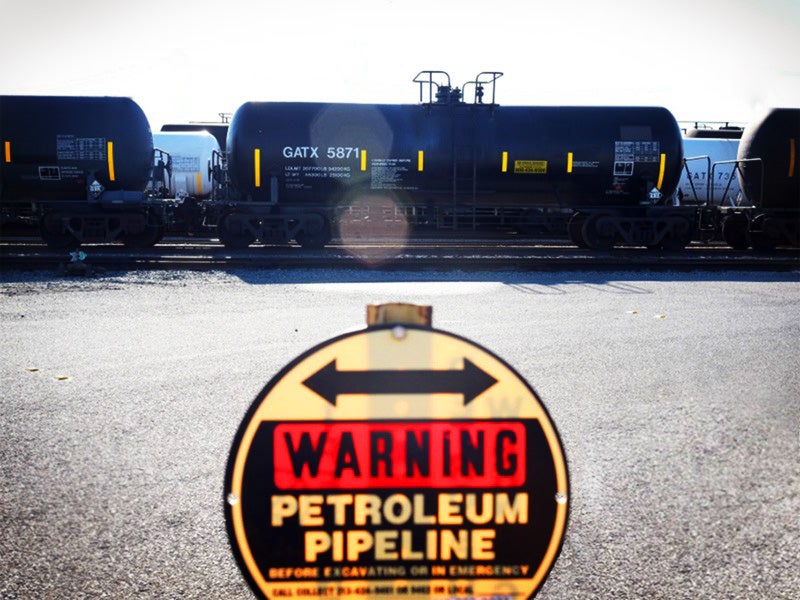Banning the Use of Hazardous Rail Cars
The recent surge in U.S. oil production, much of it from Bakken shale, has led to a more than 4,000 percent increase in crude oil shipped by rail since 2005, mostly in long oil trains with as many as 120 cars and over 1.5 miles long. The Bakken crude has proven to be more explosive than shippers represented. It is estimated that 25 million Americans live in the dangerous blast zone along the nation’s rail lines.
Case Overview
Sierra Club and ForestEthics, represented by Earthjustice, filed a formal legal petition in July 2014 to compel the Secretary of the U.S. Department of Transportation to issue an emergency order prohibiting the use of hazardous rail cars—known as DOT-111s—for shipping flammable Bakken crude oil. The National Transportation Safety Board has repeatedly found that the DOT-111 tank cars are prone to puncture on impact, spilling oil and often triggering destructive fires and explosions. The Safety Board has made official recommendations to stop shipping crude oil in these hazardous tank cars, but the federal regulators have not heeded these pleas.
In September 2013, in the wake of the deadly Lac-Mégantic and other rail disasters, the federal government began a rulemaking process to set new safety standards for crude oil rail cars. Transportation Secretary Anthony Foxx stated publicly that the DOT-111s will likely have to be phased out, and even questioned whether the industry’s replacement design is safe enough for U.S. communities. The draft rule was under review at the White House. But the groups believed that the process is moving too slowly and likely to drag on a year or more before a final rule was in place. While he had issued emergency orders addressing other urgent safety issues, all the Department had done to date was urge shippers to use the safest tank cars in their fleets. Immediately banning the use of DOT-111 tank cars to ship Bakken crude would reduce the risk of punctures and oil spills by over 75 percent, according to rail industry estimates.
The recent surge in U.S. oil production, much of it from Bakken shale, has led to a more than 4,000 percent increase in crude oil shipped by rail since 2005, mostly in long oil trains with as many as 120 cars and over 1.5 miles long. The Bakken crude has proven to be more explosive than shippers represented. And the Bakken crude has been shipped in the most dangerous tank cars on the market—the DOT-111s. The result has been oil spills, destructive fires, and explosions when oil trains have derailed. More oil spilled in train accidents in 2013 than the total in 1975–2012 combined. Canada has taken steps to ban many DOT-111s immediately and is phasing them out of hazardous transport altogether, which will shift even more of these tank cars to the U.S.
The petition followed closely on the announcement that the oil and rail industries had reached their own compromise proposal on rail safety, one that would only seek to slowly phase out dangerous DOT-111s over three years, and that would propose a weaker standard for new rail cars than the industry had previously proposed. Meanwhile, it is estimated that 25 million Americans live in the dangerous blast zone along the nation’s rail lines.
When DOT failed to respond to the petition, the groups filed a lawsuit in September 2014, challenging that failure. Eventually, DOT responded by denying the petition, and Earthjustice challenged that denial. In light of the release of the final tank car rule in May 2015, this case will be dismissed.

Case Updates
Case page created on July 18, 2014.


